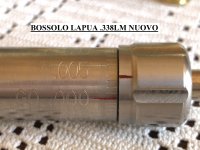Until recently, I hadn't purchased 338 Lapua brass for 10+ years.
They varied in weight between lots by several grains but were otherwise very uniform with shoulders set back around .0025.
I added another 338 to my collection and purchased 2 boxes of new brass in the hope that they would have matching lot codes. (they did, unfortunately)
Here is the problem...
The majority of the new brass will not function in my new rifle. It chambers easily, but the extractor is not engaging.
The new brass varies greatly in shoulder set back as measured with my RCBS precision mic.
It varies from -.003 to -.008. (Fired rounds are around +.002 from this rifle)
The rifle is flawless with up to .0045 set back but has a 1/3 failure rate at .005, 2/3 failure at .0055 and 100% failure rate for .006 and greater.
57% of my $600+ of new brass falls in the "failure zone".
What is the "expected" measurement?
My 308 Lapua and old 338 Lapua brass lots were never this varied, never set back this far, nor did they ever fail to function.
Has anyone else run into this issue? If so, how did you remedy it?
I'm planning to contact Lapua and see if they will swap out the brass but wanted to see if this was an unusual occurrence.
They varied in weight between lots by several grains but were otherwise very uniform with shoulders set back around .0025.
I added another 338 to my collection and purchased 2 boxes of new brass in the hope that they would have matching lot codes. (they did, unfortunately)
Here is the problem...
The majority of the new brass will not function in my new rifle. It chambers easily, but the extractor is not engaging.
The new brass varies greatly in shoulder set back as measured with my RCBS precision mic.
It varies from -.003 to -.008. (Fired rounds are around +.002 from this rifle)
The rifle is flawless with up to .0045 set back but has a 1/3 failure rate at .005, 2/3 failure at .0055 and 100% failure rate for .006 and greater.
57% of my $600+ of new brass falls in the "failure zone".
What is the "expected" measurement?
My 308 Lapua and old 338 Lapua brass lots were never this varied, never set back this far, nor did they ever fail to function.
Has anyone else run into this issue? If so, how did you remedy it?
I'm planning to contact Lapua and see if they will swap out the brass but wanted to see if this was an unusual occurrence.


